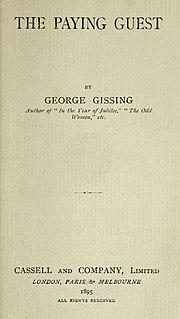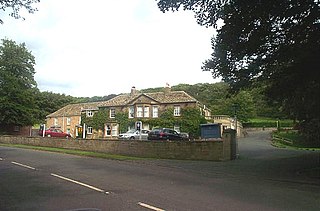| Gissing Hall | |
|---|---|
 | |
| General information | |
| Type | Country house hotel |
| Location | Gissing, Norfolk |
| Country | England |
| Coordinates | 52°25′32″N1°09′02″E / 52.425573°N 1.150567°E |
| Website | |
| http://www.gissinghall.co.uk | |
Gissing Hall is a listed fifteenth century mansion, situated in five acres of woodland and gardens in the village of Gissing in Norfolk, England. The hall is operated as a hotel and restaurant.

A listed building, or listed structure, is one that has been placed on one of the four statutory lists maintained by Historic England in England, Historic Environment Scotland in Scotland, Cadw in Wales, and the Northern Ireland Environment Agency in Northern Ireland.

A mansion is a large dwelling house. The word itself derives through Old French from the Latin word mansio "dwelling", an abstract noun derived from the verb manere "to dwell". The English word manse originally defined a property large enough for the parish priest to maintain himself, but a mansion is no longer self-sustaining in this way. Manor comes from the same root—territorial holdings granted to a lord who would "remain" there—hence it is easy to see how the word mansion got its meaning.

Gissing is a village and civil parish in Norfolk, England, about six miles (10 km) north of Diss. It covers an area of 8.11 km2 (3.13 sq mi) and had a population of 254 in 95 households at the 2001 census, falling marginally to 252 at the 2011 Census. The village is the location of Gissing Hall, a fifteenth-century mansion which is now operated as a hotel.
The Gissing estate dates back to the 15th Century when it was first owned by the Kemp family. [1] The present Hall was mostly built in the 1820s by the Reverend Sir William Robert Kemp. He graduated from Cambridge in 1813 and in 1816 became the Rector of Gissing. He was then in the interesting position of being both Lord of the Manor and spiritual leader so decided to combine the rectory with his new residence thus creating the present Gissing Hall. [2]
Gissing Hall is a privately owned and run family home, as well as being open to the public. The hotel includes 22 en suite bedrooms for guests, as well as function rooms for weddings, private receptions and corporate events. There is also a restaurant for guests and locals from the surrounding area.
In 2010, Gissing Hall was the subject of a Channel 4 television documentary presented by hotelier Ruth Watson as part of her Country House Rescue series. However, the episode featuring Gissing Hall was not broadcast until 2011.

Channel 4 is a British public-service free-to-air television network that began transmission on 2 November 1982. Although largely commercially- self-funded, it is ultimately publicly-owned; originally a subsidiary of the Independent Broadcasting Authority (IBA), the station is now owned and operated by Channel Four Television Corporation, a public corporation of the Department for Digital, Culture, Media and Sport, which was established in 1990 and came into operation in 1993. With the conversion of the Wenvoe transmitter group in Wales to digital terrestrial broadcasting on 31 March 2010, Channel 4 became a UK-wide TV channel for the first time.
Ruth Watson is an English hotelier, broadcaster and food writer.
Country House Rescue is an observational documentary series which airs on British terrestrial television channel, Channel 4. The series has also aired on BBC Canada, ABC1 in Australia and Living in New Zealand and in South Africa.
















